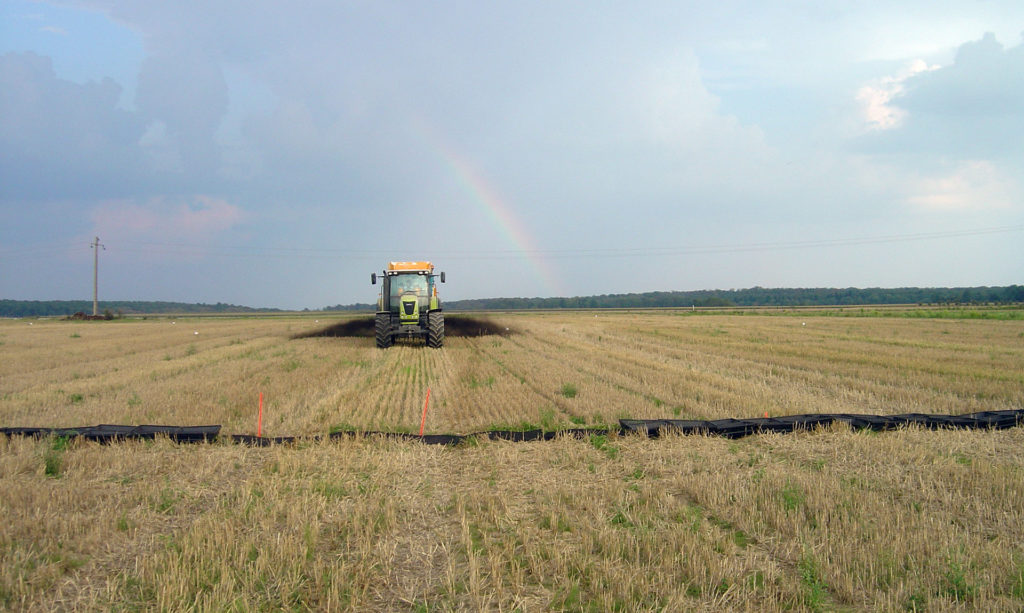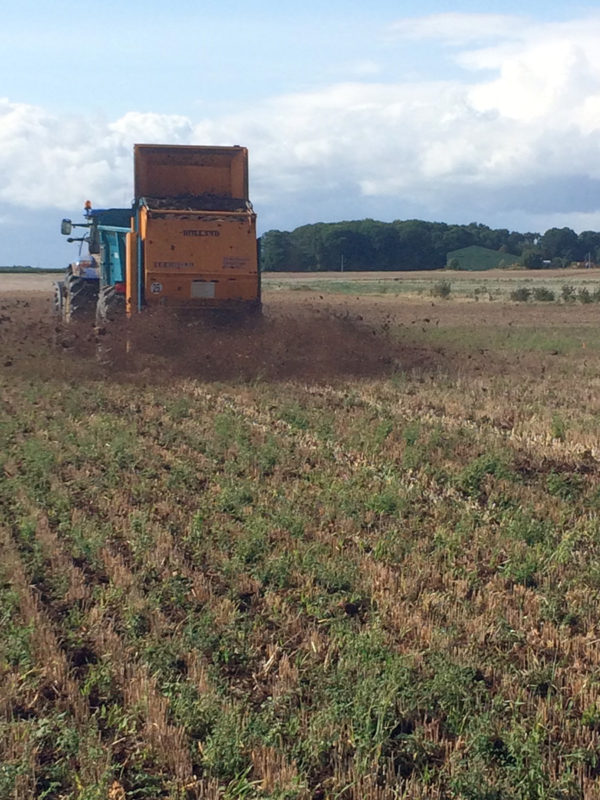
Study: Cropland management, compost key to combatting climate change
Original article by Jayme DeLoss can be found here in CSU Source

Colorado State University researchers say relatively simple changes in the management of cropland could temper the impacts of climate change. A study led by CSU shares new insights on how applying organic waste to cropland can enhance carbon and nitrogen retention and reduce greenhouse gas emissions.
The study, the longest of its kind, analyzes 16 years of soil data. Using a model developed at CSU, researchers quantified the optimal amount and timing of compost application to maximize carbon storage and plant production, while minimizing reliance on fertilizer.
The benefits of compost – decayed organic matter – have long been known to the agricultural community and gardeners alike. Compost naturally reduces the need to apply inorganic fertilizer. Using organic waste in this way also diverts it from the waste stream.
Nitrogen must be added to cropland through inorganic fertilizer if it is not present in soil. Nitrogen fertilizer is produced by burning fossil fuels, and when it is added to fields, a small percentage – about 2% – escapes as nitrous oxide, which is 265 times more potent as a greenhouse gas than carbon dioxide. Excess nitrogen also can leach into groundwater as nitrate, creating an environmental and health hazard.
Agricultural land is viewed as part of the solution to climate change. Storing carbon and nitrogen in soil prevents these greenhouse gases from being released to the atmosphere and contributing to global warming.
“Cropland is 11% of the Earth’s surface, and that feeds and clothes everyone,” said Robin Kelly, a research scientist with CSU’s Natural Resource Ecology Laboratory and co-author of the study. “It’s a great deal to demand of those lands, and we continue to demand more.”

Long-term study
Results showed that the ideal amount of compost was double the amount typically applied by farmers, and the best rate of application was every other year. After 12 years of biennial applications, no further compost was needed to achieve maximum crop yields.
“Once you add enough compost, you reach a point where you can greatly reduce your fertilizer inputs and sustain crop production for a long time,” said William Parton, lead author, senior research scientist with the Natural Resource Ecology Lab, and professor emeritus in the Warner College of Natural Resources.
Compost acts as a slow-release fertilizer. As it decomposes, it releases nitrogen, phosphorus and potassium into the soil, nutrients plants need to grow.
“You can combine organic and inorganic fertilizer practices that give you optimal production without destroying the environment,” Parton said.
CSU partnered with French company Veolia to model this 16-year experiment, called QualiAgro, which involves a wheat-corn rotation in fields near Paris.
“They came to us because we have state-of-the-art models to look at the impact of different agricultural practices on the whole ecosystem,” Parton said. “We’ve developed a set of computer models that are used to predict crop production, soil carbon, nitrogen, nitrate leaching, and nitrous oxide and methane emissions.”
The study, published in Soil Science Society of America Journal, resulted in a new version of CSU’s Century soil process model, called IROC-Century, that better represents organic waste. The long-term QualiAgro data allowed the researchers to validate the model and its projections.
Old vs. young compost
The study tested compost of various ages, and field observations confirmed the model’s projections.
As plant material decomposes, it initially releases carbon before stabilizing and holding onto the rest for a long time.
“If you were trying to build soil carbon, old compost is more efficient than young compost,” Parton said, because it has already undergone this initial cycle of carbon loss.
The age of the compost did not have any long-term effects on the system, he added.
Pros and cons
Sequestering carbon in fields could have a significant impact in mitigating climate change. And there’s another reason cropland is positioned on the front lines of the climate battle.
“Croplands tend to be intensively managed,” Kelly said, “so putting compost into those systems is a relatively small change to management that reaps these benefits.”
While optimal cropland management using organic waste has many benefits, including healthier soil, it also requires extra effort and expense. Another issue is that there are not systems in place for diverting and transporting organic waste, Parton and Kelly said.
Farming is a volatile source of income, Kelly added, so governments could subsidize farmers to use organic waste products on fields to store carbon and reduce greenhouse gases.
“Asking farmers to once again take one for the team and make these changes is perhaps putting too much pressure on farmers,” Kelly said. “We as a society and the government need to facilitate that.”
“We’re moving in the right direction, but we could move a lot faster in promoting the right kind of practices,” Parton added. “That’s where our computer models are essential; they can project the best way to manage your soil to give you the maximum return and reduce greenhouse gases without reducing plant production.”
CSU’s biogeochemical models simulate carbon and nitrogen changes among the atmosphere, vegetation and soil. They were developed over decades of research and have been applied all over the world.
“We’ve modeled almost every meter squared in agriculture,” Parton said.